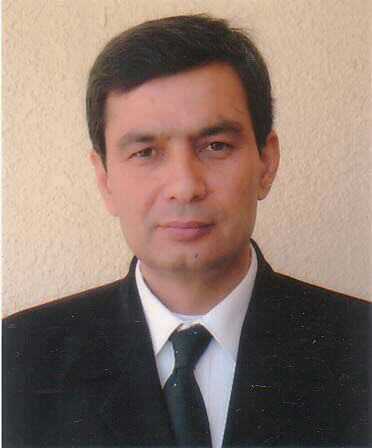Rights on literary and artistic works like novels, poems, and plays, films, musical works, artistic works like paintings and drawings, photographs, sculptures, and architectural designs come under the copyright. Copyrights protect the expressive arts. They give owners exclusive rights to reproduce their work, publicly display or perform their work, and create derivative works. The owners are given economic rights to financially benefit from their work and prohibit others from doing or copying their arts without their permission.
Copyright Law in Nepal
The copyright is protected by the Copyright Act, 2059 B.S., and Copyright Rules, 2061 has been framed according to the Act. According to the Act, the registration of the copyright is not mandatory to acquire the right. It is, however, voluntary. If the owner of the copyright wants to register it, then, an application is to be made to the Office of the Registrar. The subject- matters that can be protected are:
- Literary works like book, pamphlet, article, thesis, lecture, computer programs etc.
- Artistic works like photography, painting, architectural design, woodcarving, sculpture, lithography, map, etc.
- Musical notation with or without words, sound recordings, etc.
- Drama, dramatic music, performance etc.
Section 4 of the Act excludes some subject matters that are not protected as copyright and they are any thought, religion, news, method of operation, concept, principle, court judgement, administrative decision, folksong, folktale, proverb and general data despite the fact that such subject matters are expressed or explained or interpreted or included in any work. The Act has provided the economic right and moral right to the owner over the creation. Section 7 provides the economic right to the author or the owner to carry out the following acts:
- To reproduce the work,
- To translate the work,
- To revise or amend the work,
- To make arrangement and other transformation in the work,
- To sell, distribute or rent the original and copy of the work to the general public,
- To transfer or rent the audiovisual work, work embodied in sound recording, computer program or musical work in graphic form conferred to that author or owner,
- To import copies of the work,
- To have public exhibition of the original or copy of the work,
- To perform the work in public,
- To broadcast the work,
- To communicate the work to the general public.
Section 8 provides the moral right to the author of the work as following:
- To get his or her name mentioned in copies of the work or in his or her work where it is used publicly,
- In case where the pseudonym has been used instead his/ her real name, then to get that pseudonym mentioned while using such work publicly,
- To prevent the acts that undermines the reputation or goodwill earned by the author by mutilating his/ her work or presenting it in a distorting manner,
- To make necessary amendment or revision in the work.
Such rights remain with the author during his/ her life. After death, the rights devolve to the nominated person or organization if nominated and if not, then to the nearest heir. Section 11 provides for the remuneration in cases where a sound recording published for commercial purpose or a reproduced copy of such sound recording is directly used for broadcasting or other communications and it is so performed to the people publicly, the producer shall get a reasonable remuneration from the user of the same as per the agreement made between the performer and the producer. The term of the right to receive reasonable remuneration shall be for fifty years from the year of publication of such a sound recording.
Term of protection
Chapter 3 of the Act deals about the term of protection of copyright. The term of protection pf the economic and moral rights available to the author shall be protected throughout the life of the author and after his/ her death, it shall be protected until 50 years.
Chapter 5 is about the transfer of the copyright. The copyright owner may transfer all or any of the economic rights conferred on him/ her to any one by making a written agreement or authorize any one to use.
The following acts are considered as the infringement of the copyright under this Act as provided in section 25:
- To reproduce copies of a work or sound recording and sell and distribute them or publicly communicate or rent them with commercial or any other motive with or without deriving economic benefits without authorization of the author or the copyright owner or by infringing the terms contained in the agreement or license,
- To do advertisement or publicize by copying a work belonging to another person with a motive of taking advantage of the reputation gained by that work,
- To make work of another subject or nature by changing the form and language of a work belonging to another person with a motive of deriving economic benefit,
- To make an attempt to take benefit by adapting any work directly or indirectly with intention of making the viewer, listener or reader believe it to be another work through advertisement or by any other means,
- To import, produce or rent any equipment or device prepared with intention of circumventing any device designed to discourage the unauthorized reproduction,
- To produce or import, with intent to sell, any equipment facilitating unauthorized reception of a program broadcast by encrypting it in a code language,
- To import, sell, distribute and use a mechanical device prepared with a sole object of infringing the copyright.
Punishment for the copyright infringement
Section 27 provides punishment for the infringement of the copyright. If any person infringes the copyright or does any act prohibited by this Act, shall be punished with a fine of a sum from 10,000- 1,00,000 rupees or with imprisonment for a term not exceeding 6 months or both. And a fine of a sum from 20,000- 2,00,000 rupees or with imprisonment for a term not exceeding one year or with both for each instance from the second time. The materials so published or reproduced or distributed or devices used to reproduce such materials shall be seized. The compensation for the loss caused to the copyright owner shall be provided by the infringer. Section 26 has made restriction on the importation of unauthorized copies and such act shall be punished with a fine of a sum from ten thousand to one hundred thousand rupees and such copies shall be seized and compensation shall be provided to the owner.
The District Court has the jurisdiction to try and settle the cases punishable under this Act.
Limitation
If any right under this Act is infringed, a case has to be filed within 3 months of the knowledge of such infringement.
Nepal has two International copyright agreements, and is a member country of the Berne Convention. Nepal entered into the Berne Convention for the Protection of Literary and Artistic Works on 11 January 2006 and entered into Agreement on Trade- Related Aspects of Intellectual Property Rights on 23 April 2004.
Article 1 of the Berne Convention provides for the establishment of a union of the state parties for the protection of the rights of authors in their literary and artistic works. Article 3(1) provides for the criteria of eligibility for protection. The protection shall apply to:
- Authors who are nationals of one of the countries of the Union, for their works, published or not;
- Authors who are not nationals of one of the countries of the Union, for their works first published in one of those countries, or simultaneously in a country outside the Union and in a country of the Union.
Delta Law Firm with our Best Lawyers/Attorneys provide different arrays of legal services you can check out our practice areas or contact us at info@deltalawfirm.com or +977-1-4243071






